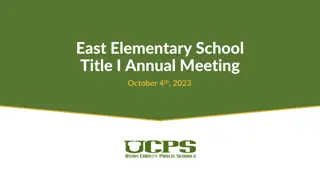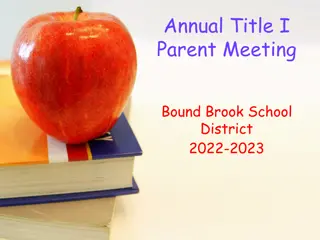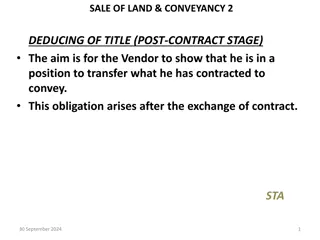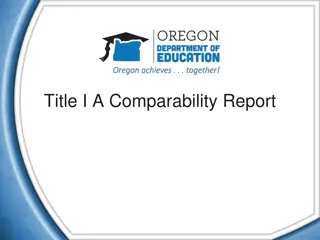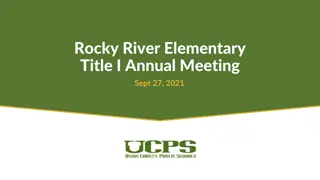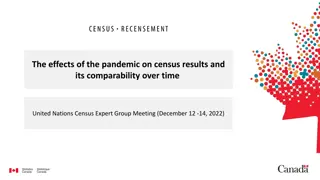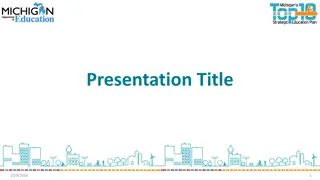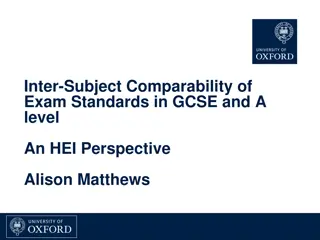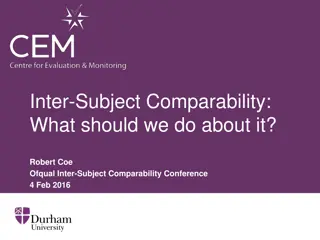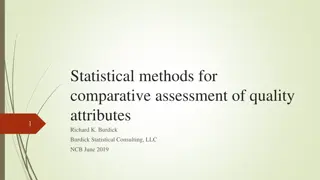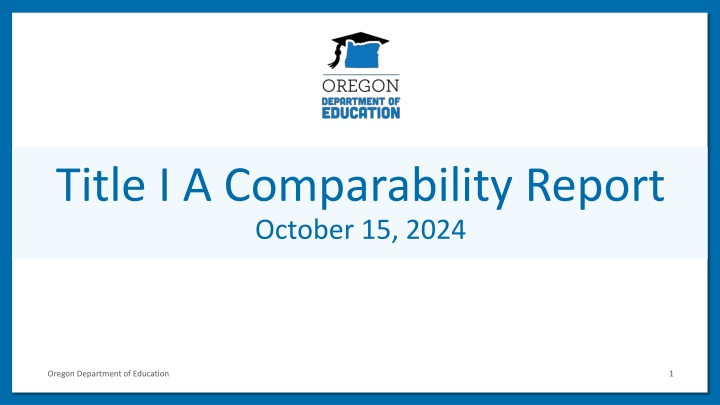
Comparability Requirements in Education
Learn about Title I-A comparability requirements in education, including the definition, statutory criteria, methods for demonstrating comparability, and which districts and schools are included in the calculations. This report by the Oregon Department of Education provides essential insights for meeting fiscal tests in educational funding distribution.
Download Presentation

Please find below an Image/Link to download the presentation.
The content on the website is provided AS IS for your information and personal use only. It may not be sold, licensed, or shared on other websites without obtaining consent from the author. If you encounter any issues during the download, it is possible that the publisher has removed the file from their server.
You are allowed to download the files provided on this website for personal or commercial use, subject to the condition that they are used lawfully. All files are the property of their respective owners.
The content on the website is provided AS IS for your information and personal use only. It may not be sold, licensed, or shared on other websites without obtaining consent from the author.
E N D
Presentation Transcript
Title I A Comparability Report October 15, 2024 Oregon Department of Education 1
Agenda for Todays Session Purpose of the Title I-A Comparability Report Meeting the Requirement Key Takeaways Oregon Department of Education 2
What is comparability? Comparability is a fiscal test for Title I-A. It is a school-level calculation that measures the level of State and Local funds and resources provided to a district's Title I-A and non-Title I-A schools. Supplement not Supplant The goal is to determine whether the distribution of State and Local funds and resources to schools are comparable, regardless of Title IA status. Title I-A Fiscal Requirements ESSA Quick Reference Brief: Comparability under Title I-A Maintenance of Effort Comparability Oregon Department of Education 3
An LEA is considered to have met the statutory comparability requirements if it has implemented: Meeting the Requirement 1. An LEA wide salary schedule; 2. A policy to ensure equivalence among schools in teachers, administrators, and other staff; and 3. A policy to ensure equivalence among schools in the provision of curricular materials and instructional supplies. Oregon Department of Education 4
Student-Instructional Staff Ratio Methods for Demonstrating Comparability Student-Instructional Staff Salary Ratio Per Pupil Expenditures Resource Allocation Plan, based on student characteristics Oregon Department of Education 5
Which Districts? This requirement applies to all public school districts that accept Title I-A funds, with the exception of any LEA that does not have more than one building per grade span. In addition, if a district has a school with fewer than 100 students enrolled, the school does not need to be included in the comparability calculations. Oregon Department of Education 6
Which Schools? All district schools (including public charter schools) are part of the calculation. The comparison is made between like grade spans, i.e. elementary-to-elementary, middle-to-middle, and high-to-high school. Student/teacher ratios and/or student/expenditures are calculated between Title I-A schools and non-Title I-A schools. Oregon Department of Education 7
Title I-A Status of Schools The Title I-A status of each funded school should be the same for both the Title I-A budget narrative and the comparability report. Oregon Department of Education 8
Which Students? All students enrolled in Title I-A and non-Title I-A schools must be included in the Comparability Report. Kindergarten students are included and their count is determined by whether or not they attend full or half-day sessions. Oregon Department of Education 9
Which Staff (Part II)? Calculate the Full Time Equivalent (FTE) numbers of certified and non-certified instructional staff who are paid with State and Local funds that are regularly assigned to each school listed. Staff members whose full salaries are paid with federal dollars are not to be included in this report. Oregon Department of Education 10
Which Staff? When comparing student/instructional staff ratios, the LEA must consistently include the same staff members in the ratios for both Title I-A schools and the comparison non-Title I-A schools. Instructional staff is defined as anyone who provides direct instruction to children or who assists or supervises those staff members who provide instruction. Oregon Department of Education 11
Showing Comparability A Title I-A school is comparable if the school s average student/teacher ratio does not exceed 110 percent of the average student/teacher ratio of schools not participating in Title I-A. For example, if the average ratio of students to instructional staff is 20 to 1 for an LEA s non-Title I-A schools, the ratio at each Title I-A school can be no higher than 22 to 1. Oregon Department of Education 12
When? All Title I-A funded schools in an LEA should meet the Title I-A equivalence staffing requirement by December 1 of each school year. Per statute, any Title I-A school not in compliance with this comparability requirement is subject to suspension and withholding of Title I-A funds. Oregon Department of Education 13
Next Steps To meet the annual target date of December 1, LEAs should collect the comparability information by October 1each year. This will allow the LEA sufficient time for allocation, placement, and/or realignment of staffing in Title I-A schools prior to December 1st. Materials can be found on the Title I-A District Resources web page Submit the report via email to Lisa Plumb at lisa.plumb@ode.oregon.gov Oregon Department of Education 14
Key Takeaways & Hot Topics All public school districts that accept Title I-A funds must submit, with the exception of: Any LEA that does not have more than one building per grade span Schools with fewer than 100 students enrolled do not need to be included in the comparability calculations Report template has been revised to address accessibility issues Join us for a webinar on Wednesday, October 23rdfrom 10-11 AM to walkthrough new template Oregon Department of Education 15
Please reach out! Amy Tidwell amy.tidwell@ode.oregon.gov Jen Engberg jennifer.engberg@ode.oregon.gov Lisa Plumb lisa.plumb@ode.oregon.gov Sarah Martin sarah.martin@ode.oregon.gov Oregon Department of Education 16
Regional Contacts by ESD Amy Tidwell o Grant, Harney, High Desert, InterMountain, Jefferson, North Central and Region 18 Jen Engberg Clackamas, Columbia Gorge, Multnomah and Northwest Regional Lisa Plumb Lane, Linn Benton Lincoln and Willamette Sarah Martin Douglas, Lake, Malheur, South Coast and Southern Oregon Oregon Department of Education 17

